Age profoundly influences how Bony Bankart lesions present, heal, and are treated. The growing skeleton of a child responds differently to injury compared to the more fragile bone and tissues of older adults. Tailoring management to these age groups ensures optimal outcomes. Below we examine key differences in presentation, healing potential, and treatment norms for pediatric and older adult patients.
1. Presentation in Pediatric Patients
Unique Injury Patterns
- Physeal considerations: The presence of open growth plates may alter the pattern of injury. Instead of a classic Bony Bankart, younger patients sometimes sustain epiphyseal injuries or small rim fractures.
- Higher elasticity: Soft tissues and cartilage are more pliable, potentially resulting in subtle displacements not evident on standard X‑rays.
Common Symptoms
- Instability episodes after sports or falls.
- Pain with overhead motion or weight-bearing.
- Limited confidence in shoulder stability, even without obvious dislocations.
2. Healing Potential in Pediatric Shoulders
- Bone quality: Pediatric bone is rich in vascular supply and remodels well, favoring healing.
- Cartilage contribution: Cartilaginous fragments may heal if well-positioned and stabilized.
- Outcome trends: When managed appropriately, children often regain full stability and function.
3. Treatment Norms for Pediatric Patients
- Non‑operative options: In first-time dislocations with minimal bone loss, immobilization and guided rehabilitation are often effective.
- Surgical considerations:
- Arthroscopic repair is commonly used when instability recurs.
- Special care is taken to avoid growth plate injury by precise anchor placement and minimal drilling.
4. Presentation in Older Adults
Injury Characteristics
- Bone density decline: Older patients often have osteopenic or osteoporotic bone, leading to larger fragments or comminution.
- Concomitant injuries: Rotator cuff tears or degenerative changes are more common, complicating the clinical picture.
Common Symptoms
- Persistent pain even without repeated dislocations.
- Stiffness and reduced range of motion.
- Functional limitations in daily activities.
5. Healing Potential in Older Shoulders
- Reduced vascularity: Healing is slower and less robust than in younger patients.
- Fragment resorption risk: Poor fixation or delayed treatment may result in nonunion or resorption of fragments.
- Arthritic changes: Pre-existing joint degeneration can affect outcomes and may require additional interventions.
6. Treatment Norms for Older Adults
- Surgical planning:
- Larger fragments often need open or augmented procedures.
- Concomitant rotator cuff repair may be performed simultaneously.
- Rehabilitation pace:
- Early controlled motion to prevent stiffness.
- Caution with strengthening due to fragile bone and soft tissue.
7. Key Differences at a Glance
| Feature | Pediatric | Older Adult |
| Bone quality | Highly vascular, remodeling | Osteopenic/osteoporotic |
| Healing speed | Rapid, reliable | Slower, less predictable |
| Common co-injuries | Rare | Rotator cuff tears, arthritis |
| Surgical focus | Protect growth plates | Address bone fragility & cuff pathology |
| Outcome trends | Excellent with early care | Good with tailored approach |
FAQs
1. Do pediatric patients always need surgery for Bony Bankart lesions?
No, many heal well with non‑operative treatment if bone loss is minimal and instability is controlled.
2. Are growth plates at risk during arthroscopic repairs?
Yes, surgeons take extra care to place anchors away from growth plates to avoid disturbance.
3. Why are older patients more prone to large fragments?
Weakened bone quality and decreased elasticity make fractures more likely during dislocation.
4. Can older adults expect full recovery after repair?
Many regain excellent function, though recovery may be slower and outcomes depend on coexisting conditions.
5. Is rehabilitation different for these age groups?
Yes, younger patients progress faster, while older adults require a more cautious, gradual approach to avoid stiffness or reinjury.
Age‑specific considerations are vital when managing Bony Bankart lesions. Pediatric patients benefit from their robust healing potential but require careful attention to growth plates. Older adults, on the other hand, present challenges with bone quality and associated injuries but can achieve strong outcomes with individualized treatment. Understanding these differences leads to better planning, safer interventions, and improved long‑term shoulder stability.
